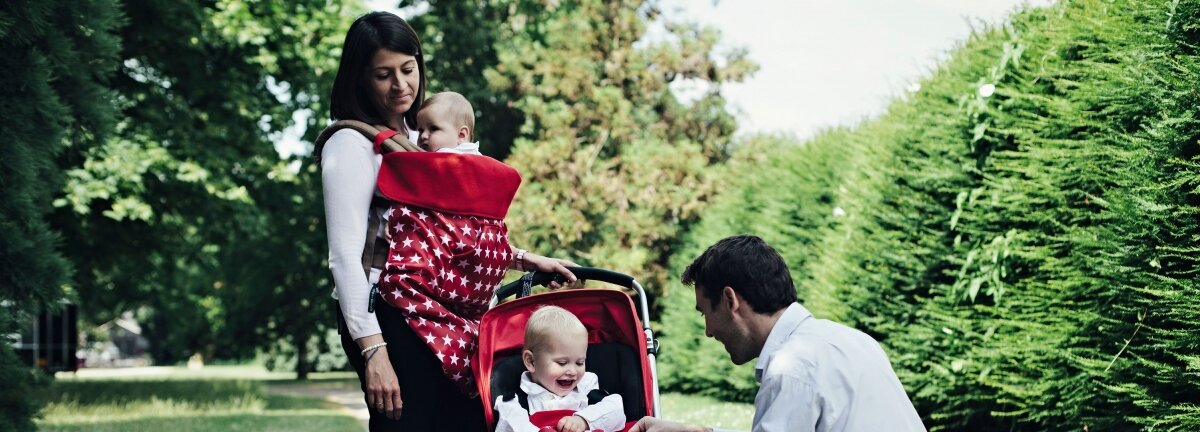Protecting your product idea: What I've learned

After finding herself struggling with all the things she needed to carry around as a new mum, Emily Goodall developed the BundleBean. Embarking on a new journey as a product inventor and entrepreneur involved new learnings and accessing lots of different support. Here Emily shares her experiences on how she made sure her product idea was protected against copying; and why an understanding of Intellectual Property (IP) is essential for any budding inventor.
When I became a parent, I wanted to limit the amount of stuff I needed to carry around with me. I didn’t want to carry a blanket, rain cover, changing mat etc. What I needed was just one accessory that could do lots of different jobs, and keep the baby warm and dry – it was this need that inspired me to create the BundleBean, an innovative range of travel products designed to help protect babies and young children in all weathers.
What makes the BundleBean unique is not just that it’s multifunctional, replacing a variety of blankets and covers for travelling equipment, as well as transforming into a picnic rug or play mat - but its clever adjusting system means that just one product can be used for every situation at every age.
There was no product like this on the market at the time and I saw a great deal of potential in the idea. People advised me to seek IP protection due to the innovative nature of the product. We were the first people in the market so IP protection gave us a hold over it and really made it hard for anyone else to duplicate our products.
I registered a trade mark for the BundleBean name and I hold a registered design for the product. This protects the shape, size, fleece lining, the positioning of the features and its waterproof textile, all of which together make the BundleBean unique.
I was advised that registered designs would be more valuable to me than any other form of IP- such as patent protection, as it would protect the look and feel of the BundleBean. This would make it hard for anyone else to replicate the product.
It’s reassuring to know that your identity is safe from copycats with protected IP. It’s also encouraging for retailers, distributors and investors to know that you are protected as they don’t want to invest their time and money into something that could easily be replicated by others.
It doesn’t end there though – even once a design is registered, design infringement is something that still occurs. So far the design of the BundleBean hasn’t been copied. If someone produced a product that was similar but didn’t step on my toes, I could use that to my advantage to boost the BundleBean brand as it shows there is a need out there for it.
One of the main things I’ve learned is how essential it is to get IP advice from professionals. A professional will advise you on what is best for your business and could stop you from spending a lot of money on things that aren’t relevant or won’t protect your product or company.
It’s also important not to speak to anyone without a Non-Disclosure Agreement (NDAs) in place. This means all discussions must be treated confidentially and information cannot be shared with anyone else. This allows you to speak openly with a range of relevant people in the industry and gain relevant expertise prior to protecting the IP and launching a product.
Now that I have two successful products on the market, the next step is to expand my company worldwide. I’m also adding to my range and applying for more registered designs for more products, but I can’t tell you any more about these until my IP is protected!
If you're venturing into the realms of IP for the first time it can seem like a daunting task - here are some pointers from the Intellectual Property Office (IPO) which really helped me on my journey to building my idea into a successful business:
- Think about IP from day one – research your ideas thoroughly before proceeding
- Consult an IP attorney/professional every step of the way
- Register your brand as a trade mark
- Make sure all employee contracts state that all IP created is owned by the company
- Create agreements with commissioned parties to establish the ownership of IP (e.g. transferring the copyright of your website to your business)
- Keep new and innovative ideas out of the public domain and ensure all employees are aware of the importance of confidentiality
IP Equip
To find out more about the potential IP in your business, take a look at IP Equip. This is a free online training tool from the IPO to help you gain more knowledge about IP and to understand the impact it could have on your business. IP Equip is part of ‘IP for Business’, a free online range of business support tools designed to help you better understand, protect and exploit your IP assets.
Spark product innovation fund
Design Council Spark is a new product innovation fund to uncover the UK's next great inventions. Apply now for a chance to win a place on our 20-week bespoke support programme, as well as an initial £15,000 investment and the opportunity to pitch for a share of £150,000 investment to help bring their physical product prototype to market.
Subscribe to our newsletter
Want to keep up with the latest from the Design Council?
